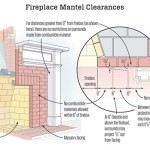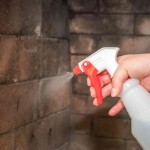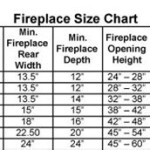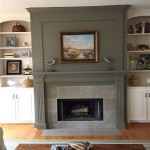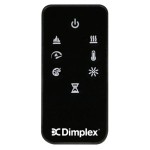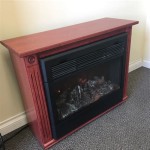Understanding the Desa Fireplace Blower Bkt: Enhancing Fireplace Efficiency
The Desa Fireplace Blower Bkt is a component primarily associated with improving the efficiency and heat distribution of certain Desa International fireplaces. Desa International, now owned by CFM Corporation, previously manufactured a wide range of heating appliances, including gas and wood-burning fireplaces. A blower, in the context of a fireplace, functions as a fan-like mechanism that circulates heated air from the fireplace into the room, leading to more consistent and comfortable ambient temperatures. The "Bkt" designation likely refers to a specific bracket or kit associated with the blower installation or compatibility with particular Desa fireplace models.
This article seeks to provide a detailed understanding of the Desa Fireplace Blower Bkt. It will cover its purpose, how it functions within a fireplace system, factors to consider when purchasing or replacing one, and potential troubleshooting steps. As Desa International no longer exists as an independent entity, finding specific parts and information can be challenging. Therefore, this article aims to offer guidance in navigating these challenges and finding suitable solutions for maintaining or improving fireplace performance.
Function and Purpose of a Fireplace Blower
The primary purpose of a fireplace blower is to increase the efficiency of a fireplace by enhancing heat circulation. Without a blower, a significant portion of the heat generated by a fireplace rises directly up the chimney, effectively wasted. While the radiant heat from the fire provides some warmth, it tends to concentrate near the fireplace, leaving other areas of the room cooler. A blower addresses this issue by drawing cooler air from the room, circulating it around the firebox, and then blowing the heated air back into the room.
This forced-air circulation achieves several benefits. First, it distributes heat more evenly throughout the room, eliminating cold spots and creating a more comfortable environment. Second, it recovers more heat from the fireplace, reducing the amount of heat lost up the chimney, potentially lowering energy consumption. Third, it can provide a more rapid increase in room temperature compared to relying solely on radiant heat. In essence, a fireplace blower transforms a fireplace from a primarily decorative element into a more effective heating appliance.
The blower itself typically consists of a fan powered by an electric motor. It is usually housed within a metal enclosure and positioned either at the bottom or rear of the fireplace firebox. The location allows it to effectively capture the rising heat and redirect it into the room. The speed of the blower is often adjustable, allowing users to control the airflow and the amount of heat distributed. Some models also include a thermostat that automatically activates the blower when the fireplace reaches a certain temperature, optimizing efficiency and preventing overheating.
Key Considerations When Purchasing or Replacing a Desa Fireplace Blower Bkt
Replacing or purchasing a fireplace blower requires careful consideration to ensure compatibility and optimal performance. Since the "Bkt" designation likely refers to a specific bracket or kit, it is crucial to identify the exact Desa fireplace model number. This information is typically found on a metal plate or sticker located on the fireplace itself, often near the gas valve or behind a removable panel. Having the model number is essential for determining the correct blower size, voltage, and mounting configuration.
Several factors influence the selection process. The physical dimensions of the blower must fit within the designated space in the fireplace. The voltage and amperage requirements must match the electrical system of the fireplace. The airflow capacity, measured in cubic feet per minute (CFM), should be appropriate for the size of the room being heated. A blower with insufficient CFM may not effectively circulate heat, while an excessively powerful blower could be noisy or consume unnecessary energy.
When purchasing a replacement blower, aftermarket options are often available. However, it is important to ensure that the replacement blower meets the original specifications of the Desa blower. Look for blowers specifically designed as replacements for Desa models and confirm compatibility with the fireplace model number. Check online retailers, appliance part suppliers, and HVAC specialists for suitable options. Verify the warranty policy and return policy of the seller before making a purchase.
Furthermore, consider the noise level of the blower. Some blowers can be quite noisy, which can be disruptive, particularly in quiet environments. Look for blowers with noise ratings in decibels (dB) and choose a model with a lower dB rating if noise is a concern. Read customer reviews to gain insights into the actual noise levels of different blowers. Also, ensure the blower's motor is adequately shielded and grounded to prevent electrical interference and ensure safe operation.
Troubleshooting Common Issues with Fireplace Blowers
Fireplace blowers, like any mechanical device, can experience problems over time. Common issues include the blower not working, producing excessive noise, or not providing adequate airflow. Diagnosing the issue is crucial before attempting any repairs or replacements.
If the blower is not working at all, the first step is to check the power supply. Ensure that the fireplace is properly plugged into a working electrical outlet and that the circuit breaker has not tripped. If the fireplace has an on/off switch for the blower, make sure it is in the "on" position. Use a multimeter to test the voltage at the blower motor to confirm that it is receiving power. If power is present but the blower is still not working, the motor itself may be faulty and require replacement.
Excessive noise from the blower can be caused by several factors. Loose mounting hardware can allow the blower to vibrate against the fireplace chassis, creating a rattling sound. Tighten all screws and bolts securing the blower to the fireplace. Dust and debris accumulation on the blower blades can also cause noise. Clean the blower blades with a brush or vacuum cleaner to remove any buildup. If the blower motor is excessively noisy, it may indicate worn bearings or other internal damage. In this case, replacing the motor or the entire blower assembly may be necessary.
Reduced airflow can be a sign of a clogged air intake or exhaust vent. Inspect the vents around the fireplace and remove any obstructions such as dust, lint, or debris. A dirty air filter, if present, can also restrict airflow. Clean or replace the air filter regularly. In some cases, a weak blower motor may also contribute to reduced airflow. If the blower motor is running but the airflow is significantly reduced, the motor may be failing and require replacement.
It's important to remember that working with electrical appliances and gas fireplaces can be hazardous. If unfamiliar with electrical or gas systems, consult a qualified technician for assistance. Always disconnect the power supply to the fireplace before attempting any repairs or maintenance. Following these safety precautions will help prevent electrical shock or gas leaks.
Locating specific parts for older Desa fireplaces can be challenging. Many online retailers specialize in replacement parts for discontinued fireplace models. Search online forums and communities dedicated to fireplace maintenance to find advice and potential sources for parts. Consider contacting HVAC technicians or appliance repair specialists who have experience working with Desa fireplaces. They may be able to provide guidance, locate parts, or offer alternative solutions.
Maintaining a fireplace blower is essential for ensuring optimal performance and longevity. Regularly cleaning the blower blades and vents will prevent dust and debris buildup, improving airflow and reducing noise. Inspect the blower for any signs of wear or damage, such as loose connections or frayed wires. Replace any worn or damaged parts promptly to prevent further damage or safety hazards. By following these maintenance practices, the fireplace blower can continue to provide efficient heating for many years.
Navigating the world of fireplace blowers can be complex, but understanding the function, considerations, and potential troubleshooting steps can empower homeowners to maintain and improve the efficiency of their Desa fireplaces. While Desa International no longer operates independently, resources and solutions are still available to ensure continued comfort and warmth during the colder months. Prioritizing safety and seeking professional assistance when needed will contribute to a safe and efficient operation of the fireplace.

Bk Bkt Ga3650 Ga3700 Ga3750 Blower Fan Only For Desa Tech Comfort Glow Fireplace

Bkt F1082 Blower Fan Kit For Desa Fmi Vanguard Vexar Astria Fireplaces

Durablow Mfb010a Bk Bkt Ga3650 Ga3700 Ga3750 Replacment Fireplace Blow Payandpack Com

Fireplace Blower Fan Kit For Desa Bk Bkt Fmi Vanguard Comfort Flame Glow

Hiorucet Ga3650a Ga3700 Ga3650 Ga3750a Bk Bkt Fireplace Blower Fan Kit For Desa Tech Fmi Vanguard Vexar Astria Replacment Comfort Flame Glow Yahoo Ping

Fireplace Blower Fan Kit For Desa Bk Bkt Fmi Vanguard Comfort Flame Glow

Durablow Mfb010a Bk Bkt Ga3650 Ga3700 Ga3750 Replacment Fireplace Blow Payandpack Com

Hiorucet Ga3650a Ga3700 Ga3650 Ga3750a Bk Bkt Fireplace Blower Fan Kit For Desa Tech Fmi Vanguard Vexar Astria Replacment Comfort Flame Glow Yahoo Ping

Fireplace Blower Fan Kit For Desa Bk Bkt Fmi Vanguard Comfort Flame Glow

Bk Bkt Blower Kit Installation
Related Posts


